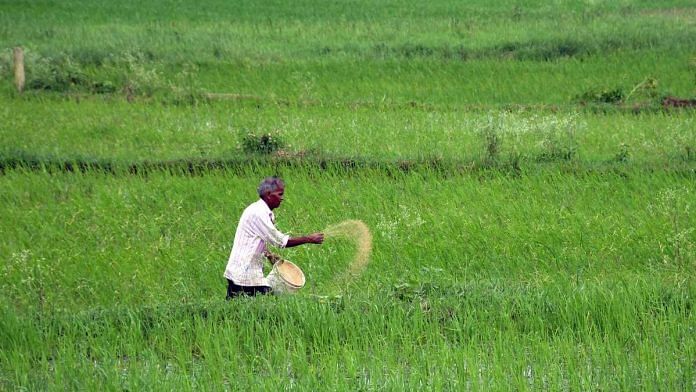New Delhi: India has stocked enough of the fertilisers urea and diammonium phosphate (DAP) to last the rest of the year, top government sources have told ThePrint — a development that comes as global urea prices rise again after the brief cooling earlier this year.
India has provisioned about 287 lakh metric tonnes (LMT) of urea for the next seven months. Its monthly manufacturing capacity stands at 25 LMT a month, while 70 lakh metric tonnes are already with states, another 16 LMT is on its way to India over the next two months through international tenders, and 1.5 lakh bags of nano urea are expected to be produced every month.
The 1.5 lakh bags of nano urea — an indigenously developed liquid fertiliser — from a plant that Prime Minister Narendra Modi inaugurated in Gujarat’s Kalol last month, are expected to replace about 3 LMT of urea. In addition, plants in Bihar’s Barauni and Jharkhand’s Sindri will both start functioning in October and produce about 2 LMT of urea a month.
India’s annual urea requirement is between 325 and 350 LMT. For DAP, the annual requirement is about 100-125 LMT — out of which India hopes to produce about 40-50 LMT, government sources said. Of the rest, 50 LMT will be imported and 21 LMT is currently with states, they said.
“We will not need to buy any more urea or DAP for the rest of the year. This also means that we have the latitude to buy from the international market as and when the price suits us,” said a senior government functionary speaking on condition of anonymity. “India is one of the top four buyers of urea — the others being Brazil, China, and the US. If we do not buy at prices that we find high, often enough we have found that the price comes down on its own. We will do strategic buying.”
Officials say that it is important to provision fertilisers well in advance because any delay in availability could create panic among farmers and could even result in agitations — even if the delay is merely logistical and adequate fertiliser is available.
Russia’s war in Ukraine has put severe pressure on the global fertiliser market and has driven up prices.
Also Read: An ancient crop is helping Punjab farmers fight climate change. But sustainability is key
Crackdown on urea diversion
Urea is a highly subsidised commodity, with a bag costing a farmer Rs 266 and the government of India Rs 3,000. Besides agriculture, urea is also used in industries such as plywood resin, crockery, dairy, and cattle feed.
According to government sources, the Department of Fertilizers recently carried out extensive raids against companies that were diverting the highly subsidised urea meant for agriculture to these industries. It detected unaccounted stocks of about 25,000 bags of urea and a GST evasion of Rs 64.43 crore.
Six people have been arrested from the 52 units spread across six states — Haryana, Kerala, Rajasthan, Telangana, Gujarat, and Uttar Pradesh — involved in this diversion.
Similar raids were also carried out in 38 mixture manufacturing units (that produce mixed fertisers) in Maharashtra, Gujarat, Tamil Nadu, and Bihar. In 15 of the units raided, more than 70 per cent of samples failed a quality test. The department has now set up fertiliser flying squads for regular surprise inspections to prevent malpractice.
(Edited by Uttara Ramaswamy)
Also Read: This paddy cultivation technique is Punjab govt’s answer to ‘save water, avoid crisis’



